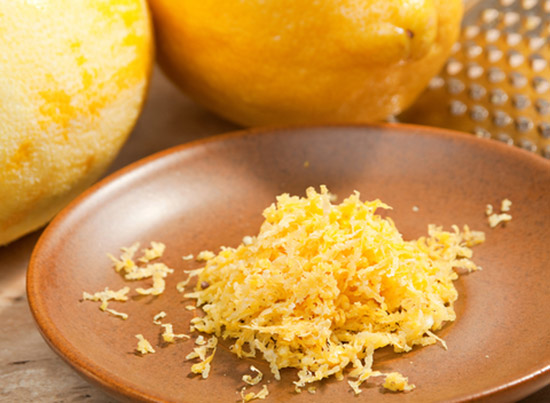I have two cake recipes that seem quite similar, but one calls for lemon rind and the other calls for lemon zest. What’s the difference between lemon rind and zest? Are they both the same as lemon peel?
What’s the Difference Between Lemon Rind and Zest?
How to tell the difference between lemon rind and zest is a question that has long perplexed bakers, as it seems they are sometimes used interchangeably. Technically the zest of any citrus fruit is the thin, colored outer layer of the skin. The rind includes the zest and a bit of the bitter white underlayer, whereas the peel is the whole jacket — everything but the flesh. Zest contains the flavorful citrus oils and is the most widely useful of the three. Rind is specified when something more durable is needed, such as for simmering in stews and fruit compotes, for instance. The entire peel is mostly used in marmalade, although there are some cakes and relishes that call for the ground whole fruit.
All this is “technically,” however, in that many recipe writers say rind or peel when they actually mean zest. Make your decision on the basis of context: If small amounts of the stuff are called for as a flavoring that will be eaten, zest is the way to go. Usually it’s grated from the side of the fruit, but if you need a lot of thin strips (martinis for the multitudes), you can get a special zesting tool at kitchenware stores.
This first appeared in the November/December 1997 issue of Yankee Magazine
and has been updated.


